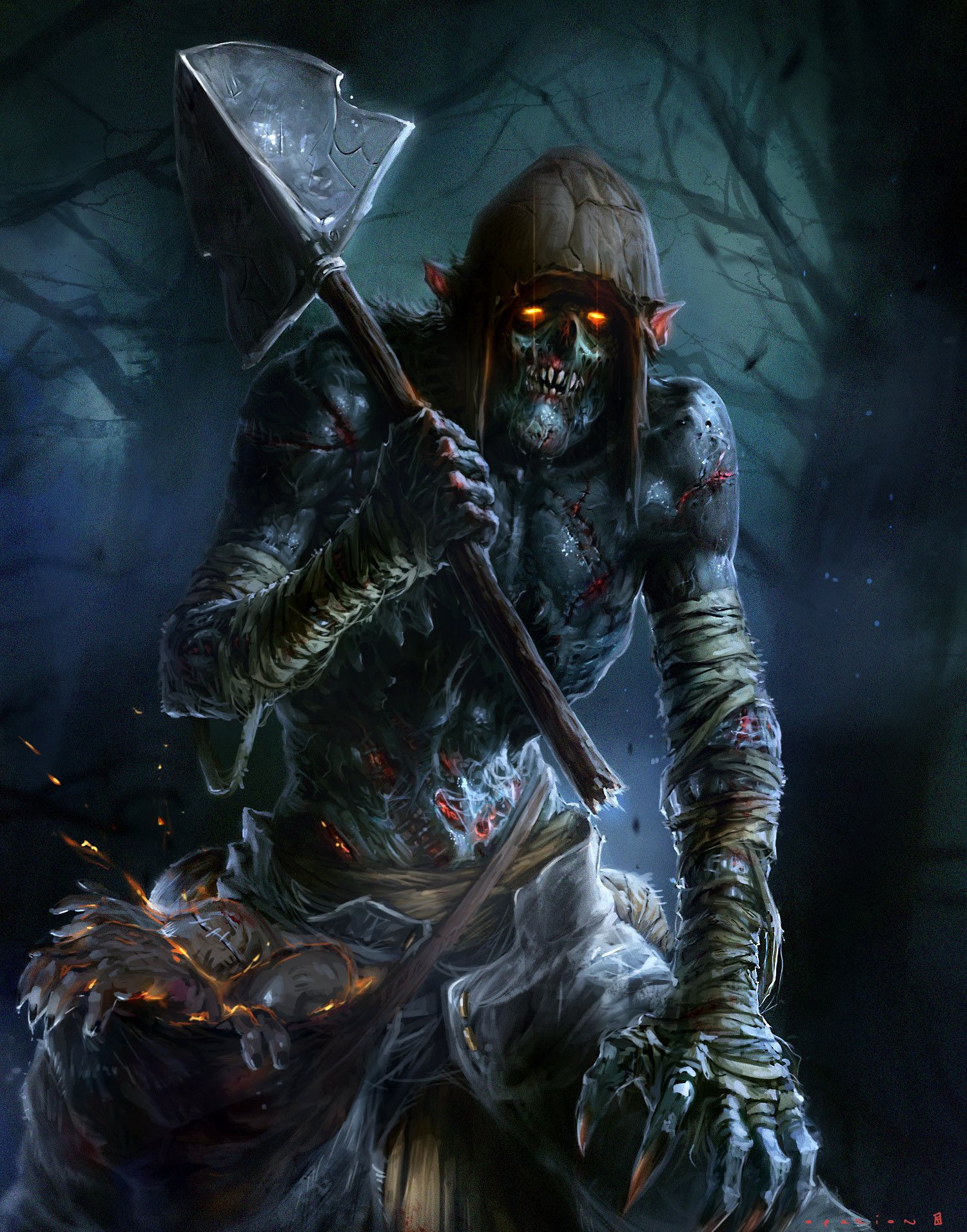Ghast
| Species | undead |
| No. Appearing | 1–6 |
| Behaviour | resentful |
| Range | ruin, subterranean |
| Size | 4 to 6 ft. tall |
| Weight | 135 lbs. |
| Intelligence | 2 |
| Armour Class | 4 |
| Hit Dice | 4 |
| Action Points | 5 |
| Max. Stride | 4 |
| THAC0 | 18 |
| Hp/Die | d6 |
| Attack Forms | 3: two claws; fangs |
| Damage | claw (1–4); fangs (1–8) |
| Special Attacks | carrion stench, immune to sleep, charm, and protection from malevolence, paralysation |
Ghasts are undead creatures arising through unlikely conditions, having to do with deceased persons of especially contemptible nature and the manner of their burial. With those who have practiced malevolence and evil their whole lives depart, the soul resists departing the prime material plane ... knowing the fate destined to befall it in the lower planes. Therefore, careful effort must be taken to ensure the body is interred properly in consecrated ground.
If the dead of this nature is, instead, buried on ground that's become desecrated, such as a graveyard that ceases to be properly tended, the lands of a property that have been subjected to vile, unholy practices, then the grip of virtue will be weak upon the person's soul, enabling the return to animation as a ghast.
One ghast is then free to create other ghasts — for any creature done to death by a ghast will, in turn, also rise as a ghast. Thus, an infection of evil can spread, potentially damning scores of innocent good souls to an unhappy, fiendish existence.
Ghasts appear much like ghouls. Viewed through the power of detect malevolence, however, they glow weirdly along the seams of the body, as the disease rents it apart ... particularly in the eyes.
Advantages
The chief difference by which a ghast can be recognized is through it's stench, an ungodly putrid odour that strikes the perceiver as the rotting of a being's soul.
See Bestiary
